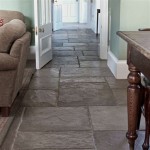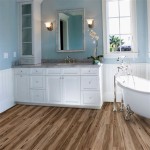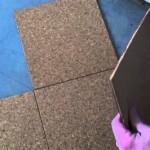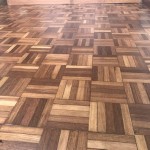Maple Engineered Hardwood Flooring: A Balanced Look at Pros and Cons
Maple engineered hardwood flooring has become a popular choice for homeowners seeking the aesthetic appeal of solid hardwood with enhanced durability and stability. Engineered hardwood, unlike solid hardwood, consists of multiple layers of wood veneer, with a core usually made of plywood or high-density fiberboard (HDF), topped with a layer of genuine maple hardwood. This construction offers advantages in terms of moisture resistance and installation options, but also presents certain drawbacks. This article will explore the pros and cons of maple engineered hardwood flooring to help prospective buyers make an informed decision.
The Allure of Maple: Aesthetic Advantages and Design Flexibility
Maple hardwood itself is prized for its light, creamy color and subtle grain patterns. This provides a clean, contemporary look that complements a wide range of interior design styles. Maple's relatively uniform texture allows it to blend seamlessly into modern minimalist spaces, while its ability to be stained in various shades allows it to be adapted for more traditional or rustic aesthetics. The availability of different plank widths and lengths in engineered maple further enhances design flexibility. Wider planks, for example, can create a more spacious and luxurious feel, while narrower planks may be preferred for smaller rooms or more intricate patterns.
The light color of maple also makes it an excellent choice for rooms with limited natural light. It reflects light well, brightening the space and making it feel more open. Furthermore, maple can be finished with various sheen levels, from matte to high gloss, allowing homeowners to customize the appearance of their floors to suit their individual preferences and lifestyle. A matte finish, for instance, tends to hide scratches and dents better than a high-gloss finish, making it a more practical choice for high-traffic areas or homes with pets and children.
The consistency of maple grain makes it a suitable canvas for stains. Unlike woods with more pronounced grain patterns, such as oak, maple readily accepts stains without obscuring the natural beauty of the wood. This allows homeowners to achieve a wide range of colors and tones, from light and airy to dark and dramatic, while still retaining the subtle character of the maple wood itself. This versatility in staining also means that maple floors can be easily coordinated with existing furniture and décor.
Structural Advantages and Installation Considerations
Engineered hardwood flooring offers significant structural advantages over solid hardwood, particularly in environments with fluctuating humidity levels. The multi-layered construction of engineered hardwood makes it less susceptible to expansion and contraction due to changes in moisture, which can lead to warping, cupping, or gapping in solid hardwood floors. This dimensional stability makes engineered maple a suitable choice for basements, kitchens, and other areas where moisture is a concern.
Installation of engineered maple hardwood is also generally simpler and more versatile than solid hardwood. Many engineered hardwood products are designed with click-lock systems that allow for floating installation, meaning the flooring is not directly attached to the subfloor. This can save time and money on installation costs and also makes it easier to remove or replace individual planks if necessary. In addition to floating installation, engineered hardwood can also be glued down or nailed down, providing flexibility to suit different subfloor types and installation preferences.
The core of engineered hardwood, typically constructed from plywood or HDF, contributes to its structural integrity and moisture resistance. Plywood cores are known for their strength and resistance to delamination, while HDF cores offer excellent dimensional stability and impact resistance. The thickness of the core also plays a crucial role in the overall performance of the flooring; thicker cores tend to provide greater stability and resistance to moisture and impact.
Durability, Maintenance, and Lifespan
The durability of maple engineered hardwood flooring depends on several factors, including the thickness of the maple veneer, the quality of the core material, and the type of finish applied. A thicker veneer will generally be more resistant to wear and tear than a thinner veneer, as it allows for more sanding and refinishing over the lifespan of the floor. The quality of the finish also plays a crucial role; a durable finish will protect the wood from scratches, stains, and fading.
Maintenance of maple engineered hardwood flooring is relatively straightforward. Regular sweeping or vacuuming is recommended to remove dirt and debris that can scratch the surface. Occasional damp mopping with a pH-neutral wood floor cleaner is also necessary to maintain the appearance of the floor. It is important to avoid using excessive water when mopping, as this can damage the wood. Additionally, the use of felt pads under furniture legs can help to prevent scratches and dents.
The lifespan of maple engineered hardwood flooring can range from 20 to 50 years, depending on the quality of the product, the level of foot traffic, and the maintenance practices employed. With proper care and maintenance, an engineered maple floor can provide years of beauty and durability. However, it is important to note that engineered hardwood floors can only be sanded and refinished a limited number of times, depending on the thickness of the veneer. Once the veneer has been sanded down too far, the flooring will need to be replaced.
Understanding Potential Drawbacks and Limitations
While maple engineered hardwood flooring offers numerous advantages, it also presents certain drawbacks that prospective buyers should consider. One of the primary limitations is its susceptibility to dents and scratches. Maple, while a relatively hard wood, is not as hard as some other hardwood species, such as Brazilian cherry or hickory. This means that it is more prone to dents and scratches from high heels, pet claws, or dropped objects.
Another potential drawback is the limited refinishing potential of engineered hardwood. Unlike solid hardwood, which can be sanded and refinished multiple times, engineered hardwood can only be refinished a limited number of times, or not at all, depending on the thickness of the veneer. This means that the lifespan of an engineered maple floor may be shorter than that of a solid maple floor if it experiences significant wear and tear.
The cost of maple engineered hardwood flooring can also be a significant factor for some buyers. While engineered hardwood is generally less expensive than solid hardwood, it can still be a substantial investment, especially for large areas. The cost will vary depending on the quality of the product, the thickness of the veneer, and the brand. It is important to compare prices from different suppliers and to factor in installation costs when making a purchasing decision.
Environmental Considerations and Sustainability
The environmental impact of maple engineered hardwood flooring is an important consideration for environmentally conscious consumers. Engineered hardwood is often considered a more sustainable option than solid hardwood because it uses less of the valuable hardwood resource. The core of engineered hardwood is typically made from rapidly renewable materials, such as plywood or HDF, which can be sourced from sustainably managed forests.
When selecting maple engineered hardwood flooring, it is important to look for products that are certified by reputable organizations, such as the Forest Stewardship Council (FSC). FSC certification ensures that the wood used in the flooring comes from responsibly managed forests that meet strict environmental and social standards. This helps to ensure that the flooring is produced in a sustainable manner and that the forest resources are protected for future generations.
The manufacturing process of engineered hardwood can also have an environmental impact. It is important to choose products that are manufactured using environmentally friendly processes, such as low-VOC (volatile organic compound) finishes and adhesives. VOCs are emitted from some building materials and can contribute to indoor air pollution. Choosing products with low VOC emissions can help to improve indoor air quality and reduce the environmental impact of the flooring.
Cost Analysis and Budgeting
The cost of maple engineered hardwood flooring can vary significantly depending on several factors, including the thickness of the veneer, the quality of the core material, the brand, and the location of the retailer. It is important to obtain quotes from multiple suppliers to compare prices and to factor in installation costs when budgeting for the project. Installation costs can vary depending on the type of installation (floating, glue-down, or nail-down) and the complexity of the project.
In addition to the cost of the flooring itself, it is also important to budget for accessories, such as underlayment, moldings, and transitions. Underlayment is a layer of material that is installed between the subfloor and the flooring to provide cushioning, sound insulation, and moisture protection. Moldings and transitions are used to cover gaps between the flooring and walls or other surfaces. These accessories can add to the overall cost of the project, so it is important to factor them into the budget.
When budgeting for maple engineered hardwood flooring, it is also important to consider the long-term costs, such as maintenance and refinishing. While engineered hardwood is relatively easy to maintain, it will require occasional cleaning and refinishing over time. The cost of refinishing will depend on the size of the area and the thickness of the veneer. By considering these long-term costs, homeowners can make a more informed decision about whether maple engineered hardwood flooring is the right choice for their needs and budget.

Oak Vs Maple Floors Find Out Which Is Better Carlisle Wide Plank

The Pros And Cons Of Maple Wood Flooring

Oak Vs Maple Floors Find Out Which Is Better Carlisle Wide Plank

Maple Flooring Pros Cons Costs And Alternatives

Maple Flooring Pros Cons Costs And Alternatives

Hardwood Vs Engineered Wood Flooring Which Is Best For You Forbes Home

Engineered Hardwood Flooring Pros And Cons Floors Blvd

Exploring Maple Hardwood Flooring Pros And Cons Guide

10 Examples Of Engineered Hardwood Flooring Pros And Cons Reallyfloors America S Est

Maple Flooring Pros Cons Costs And Alternatives








